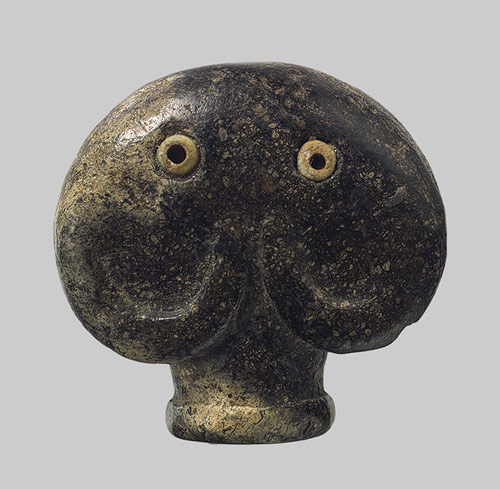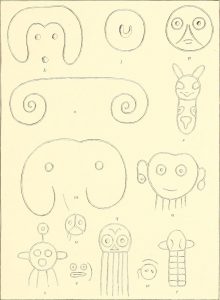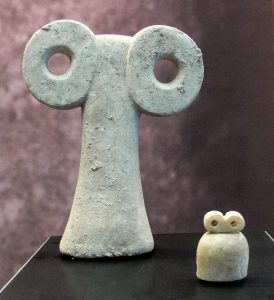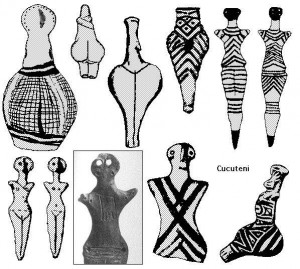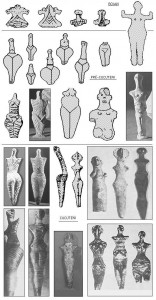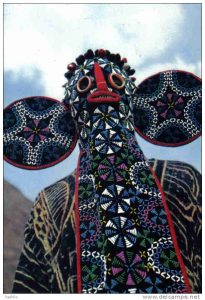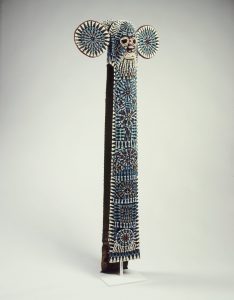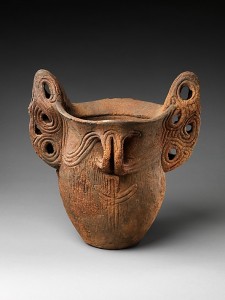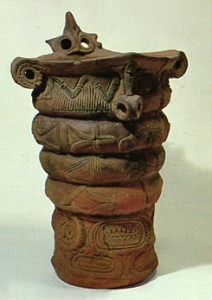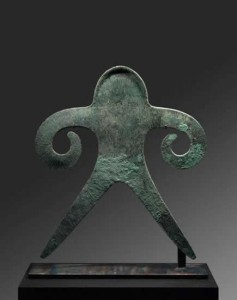Amulet in the form of a head of an elephant. © The Metropolitan Museum of Art.
Period: Predynastic, Naqada II
Date: ca. 3500–3300 B.C.
Geography: From Egypt
Medium: Serpentine Bone
Dimensions: h. 3.5 × w. 3.6 × d. 2.1 cm (1 3/8 × 1 7/16 × 13/16 in.)
Credit Line: Rogers Fund, 1959
Accession Number: 59.101.1
The original caption reads:
Few amulets from the Predynastic Period are known. In the past, Egyptologists identified these amulets as representing a bull’s head, but the round face and eyes, the horns that curve inward to the face, and a snout with a defined ridge make a strong argument for its identification as an elephant. During this period, elephants lived in oasis-like zones in the high desert created by greater rainfall than today. They were probably a rare sight to floodplain dwellers, but their size, tusks, and aggressive displays made them an awe-inspiring creature and an excellent subject for a potent amulet.
Compare to this:

